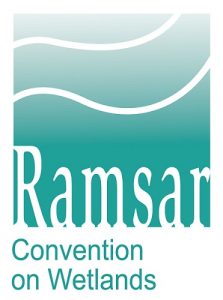1. Introduction
Healthy, natural wetlands are critical for human survival. Yet they face many challenges. The Convention on Wetlands (the Ramsar Convention) is the only international legal treaty primarily focused on wetlands. It works globally to promote their conservation and wise use, ensuring that wetlands play a key role in delivering the Sustainable Development Goals, Aichi Biodiversity Targets, the Paris Agreement on Climate Change and other related commitments. The Global Wetland Outlook outlines the status and trends in wetlands worldwide, along with the challenges and responses.
English
French
Spanish
2. Status and Trends
Ramsar tracks global wetland status and trends, which helps measure progress in Sustainable Development Goal 6. Natural wetlands have declined in inland, coastal and marine habitats; a small growth in artificial wetlands fails to compensate. Populations of wetland-dependent species are declining and many are threatened. Global water quality is still getting worse. Yet wetlands are critically important for their ecosystem services: food and water security, disaster risk reduction and carbon sequestration amongst others. Their economic and biodiversity value far outweighs many terrestrial ecosystems.
English
French
Spanish
3. Drivers of Change
There are three main drivers of change: direct drivers that create biophysical change in wetlands (land use change, pollution, etc.), indirect drivers that are the processes in society that create the direct drivers, and global megatrends that are behind several indirect drivers. Effective policy and management for wise use need a good understanding of the drivers of change in wetlands so that the root causes of wetland loss and degradation can be addressed. Effective governance at local, national and regional levels is a key factor for preventing, stopping and reversing the trend of wetland loss and degradation.
English
French
Spanish
4. Responses
Responses must address many challenges simultaneously. Enhancing the network of Ramsar Sites, and of other protected and conserved areas, ensures a conservation framework. Integrating wetlands into the post-2015 development agenda, and the Sustainable Development Goals, will help achieve wise use. Ramsar has several mechanisms to respond to problems and to measure progress towards goals. Other tools are also needed: legal and policy instruments, economic and financial incentives and sustainable production. Capacity building and encouraging diverse perspectives are both critical to success.




